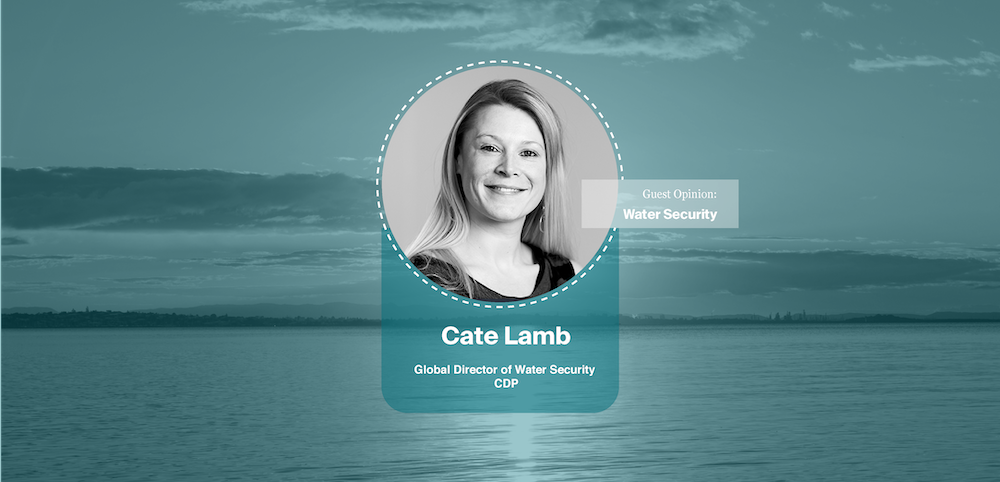- Water security may be “invisible risk,” but will also prove costly to big businesses that continue to ignore it. CDP’s Global Director of Water Security says $425 billion is at risk due to water issues.
We all know water is essential for our own personal survival. But it’s also integral to the survival of business.
Access to safe and plentiful water is often overlooked as an environmental issue, leaving it fighting for attention alongside other global challenges, such as rising emissions and deforestation. The World Bank aptly labels water pollution as “an invisible crisis,” one that is deeply threatening to both society and our economy.
Our current water systems are unsustainable and unfit to meet the needs of current and future generations. Nearly 80% of wastewater is released untreated, a third of rivers in Latin America, Africa and Asia are affected by severe pathogen pollution and almost 60% of Europe’s surface water is polluted. We have seen a dramatic 73% decline in freshwater biodiversity in just 40 years. Climate change and a growing population are set to place even further strain on already limited resources.
The knock-on effects of this on business are set to be colossal. Yet the majority of companies have so far been slow to act. Even though $425 billion is estimated to be at risk at just over 500 companies due to water issues, our research has found that only 12% of major food, fashion, energy and extractive companies are working to reduce water pollution or monitor the levels of water discharge in their operations. And while investors and buyers with a combined financial power of $96 trillion required companies to disclose data on their water-related risks and strategies via CDP in 2019, over 2,500 companies failed to do so.
This needs to change. In a COVID-fuelled climate of financial uncertainty, businesses need to place water security at the very heart of their policies and action plans. At the same time, they must explore opportunities that will allow them to thrive in a resource constrained world, such as harnessing wastewater.
Some companies, such as Campbell Soup Co., are already taking positive strides towards water sustainability. They’ve set water quality targets to reduce the amount of nitrogen used per ton of their tomatoes to try and decrease the risk of nitrogen pollutants being released into the surrounding freshwater environment. Agriculture giant Cargill, the largest private company in the U.S., has also recently announced targets to reduce around 5,500 tons of water pollutants from across its value chain.
Others are planning to spend a total of $450-700 million on reducing their water pollution impacts. Teck Resources Ltd., a Canadian coal extraction and processing company, for example, is investing money to stabilize the selenium concentrations downstream of its operations in the Elk Valley.
The business case for water action and disclosure is self-evident. Research by Oxford and Maastricht Universities has found that companies disclosing environmental data have a lower cost of capital — saving on average $1.2 million per year. And a recent study from McGill University and Millani concluded that firms disclosing specifically to CDP ranked 19 percentiles better than the average firm in their ability to access capital.
Governments, consumers and enlightened businesses are moving to address this crisis — and investors are paying attention. A water-secure future is coming. We need companies to recognize the urgency with which we must achieve this future, looking beyond “business-as-usual” approaches in order to respond with the scale of innovation and ambition required to preserve capital, and protect society alongside the economy.
Cate Lamb is CDP’s Global Director of Water Security, working with stakeholders to change corporate management of water. Follow her at @Cate_Lamb on Twitter.






















